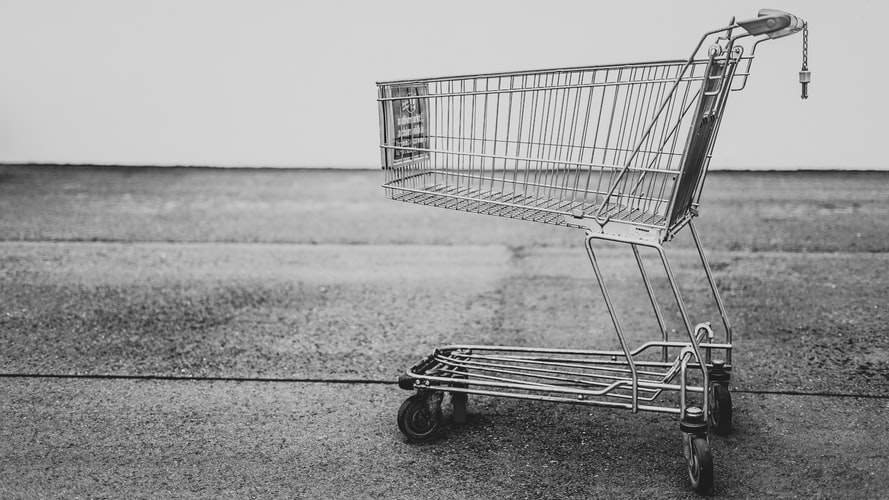May 11, 2020
By Blog Team
In
This week, we’re kicking off our Survive and Thrive blog series, which will be running throughout the month of May. The series will explore how businesses can weather the COVID-19 pandemic. We’ll be investigating the solutions that’ll allow businesses to both survive and thrive over the coming months.
In this blog, we explore e-commerce growth by looking at how grocery giants like Tesco neglected to localise their e-commerce experience in Asia and failed as a result.
It feels like all we’re hearing right now is bad news.
We’ve listened time and time again to prophets of doom talk about how the global COVID-19 outbreak already has, or is about to, crush countless industries. We’ve read about shrinking economies, recession forecasts and the uncertain futures of SMEs. We may have even fervently shared these worrying stats and panicked articles with our own circle, under the guise of preparing our business partners, colleagues and friends as best we can for the oncoming economic downturn.

There’s no denying that we have to be realistic about the impact of this pandemic on business. If we’re to successfully plan for the future and put the right measures in place to weather this storm, we need to be armed with the right information.
But, at the same time, isn’t it about time we question what we’re actually achieving by buying into the sensationalist coverage of COVID-19 and its predicted impact on business?
Isn’t it about time we focus on the solutions, rather than potential problems?
Shouldn’t we be looking to what we can control, rather than what’s decidedly out of our hands?
That’s exactly what we’ll be aiming to do in our ‘Survive and Thrive’ blog series. So, without further ado, let’s begin by looking at one of the sectors that is currently thriving: E-commerce.
E-commerce growth in the time of coronavirus
Stay-at-home orders and national lockdowns have had an extraordinary impact on the global retail industry in particular. But, as many shops have been forced to close their physical doors, online retailers have seen an avalanche of shoppers.
- There has been a 129% year-over-year growth in U.S. & Canadian e-commerce orders as of April 21 and a 146% growth in all online retail orders.
Meanwhile, in the UK, e-commerce has surged 83% year-on-year in the last two weeks — the highest growth since the coronavirus outbreak began.

This e-commerce growth flies in the face of the pessimistic business predictions filling column inches right now. It proves that there are opportunities out there – It’s just about harnessing the potential.
Whilst it’s encouraging to see that one industry is thriving in the throes of the COVID-19 outbreak, what happens in our post-pandemic world? What can retailers be doing now to foster sustained e-commerce growth? How can retailers guarantee success in the long term, long after the coronavirus has come and gone?
The answer lies in localisation.
Every little helps?: Localisation, e-commerce and Tesco
You’ll often hear LSPs talk about the successes of localisation, but we rarely hear about what happens when retailers fail to react to the demands of their target market.
At the beginning of March, Tesco quietly pulled out of all Asian markets after agreeing to sell its Thailand and Malaysia-based businesses to CP Group. This comes after Tesco sold its remaining stake in the Chinese market in February and withdrew from South Korea back in 2015.
This retreat comes as no surprise to those following European grocers’ activities in Asian markets over the past few years.
Those grocers that have either sold off or withdrew control in Chinese and Asian markets since 2016 include British retailer Marks & Spencer, French grocer Carrefour, German supermarket Metro and Spanish supermarket Dia.
But where did it all go wrong?

E-commerce in Asia: What the grocery giants didn’t do
Chris Zhou, the general manager for Mindshare’s MPower team in China, tells The Drum, “While local brands have been pumping millions of money into creating these unique, seamless digital shopping experiences, foreign grocery brands in Asia have kept their focus on pricing."
He claims that, by not meeting the target Chinese consumer's expectations, foreign grocery brands have been unable to compete.
Jacob Cooke, CEO at Web Presence In China Marketing + Technologies, also speaking to The Drum, agreed. He claimed that European retailers such as Carrefour didn’t make any effort to localise their retail experience for local customers, and so set themselves up for failure.

“Most of these others were the same, unfortunately. They don't localize for the region and that rarely works.”
When e-commerce retailers aim to accelerate their growth in foreign markets, they must consider several key aspects.
It isn’t just about translating your website into multiple languages. It is about adapting your brand image and user experience entirely to fit the cultural norms of your target market.
For example, a US English website is no longer enough if you want to sell in Australia, Canada and the UK. If you want your copy to truly resonate, you will need to adapt your website copy into multiple locales.
What’s more, your imagery, colour schemes and user journey should be perfectly aligned with your target market’s expectations. Have you considered that many German customers, for example, prefer retailers issuing open invoices instead of e-wallet style payments?
The lesson is clear: E-commerce growth, particularly in the time of COVID-19, is all well and good in your home market. But if you’re aiming for overseas growth, don't expect this success to be automatically replicated – No matter how big your company is.
Fail to adapt your retail experience for overseas markets and prepare to fail.
Why Wolfestone?
Here at Wolfestone, we have a track record of helping our clients successfully go global.
Our bespoke localisation services get to the heart of what makes your target market tick.
Get in touch with our expert team and find out how we can help you reach your goals.

